My Spicy Shoyu Ramen is a comforting bowl of noodles in a savory soy sauce broth that you can’t stop slurping. Topped with seasoned soft-boiled egg and melt-in-your mouth chashu pork belly, this delicious bowl of spicy delight will surely satisfy your craving for Japanese ramen. {Vegetarian substitutions included}
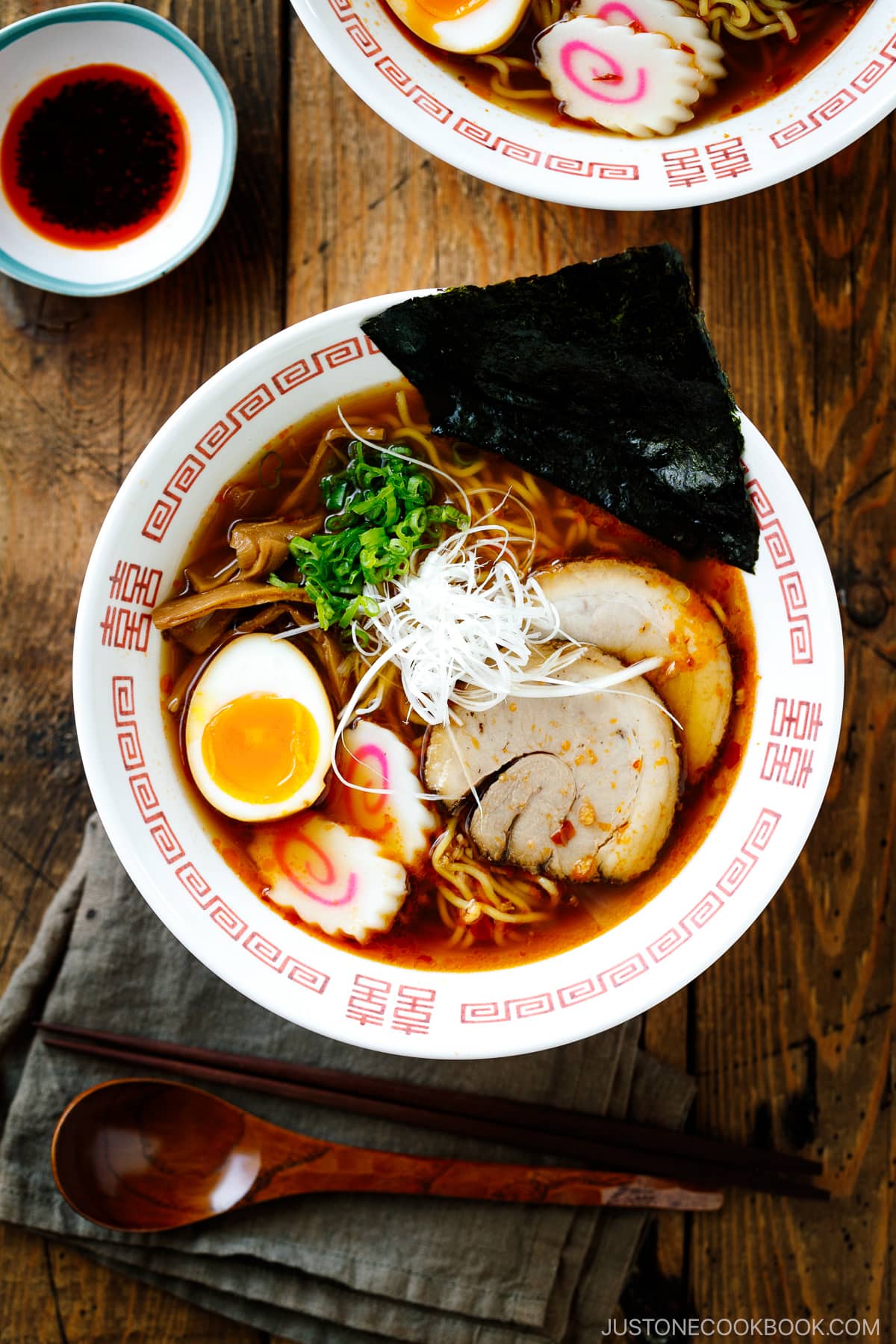
Are you ready for some noodles, melt-in-your-mouth chashu pork, pickled bamboo shoots, fresh chopped scallion, and a spicy broth that you can’t stop slurping? I hope you are hungry because we’re going to make some hot bowls of Spicy Shoyu Ramen (ピリ辛醤油ラーメン) together. If noodle soup is your comfort food, you are going to enjoy this one.
Table of Contents
What is Shoyu Ramen?
Shoyu (醤油) means soy sauce in Japanese. Shoyu ramen simply refers to ramen served with a soy sauce-based broth that is usually in clear, brown color. It is one of the three main types of ramen categorized by broth flavors. If you’re in Tokyo, shoyu ramen is the most familiar form of ramen you’ll find.
To make a good bowl of ramen is an art form itself. Ramen chefs pull together different elements to define the bowl of noodles. Even the simplest of ramen requires close attention to the ingredients, be it the broth or noodles, making sure each one interacts harmoniously.
But, please don’t let this stop you from making ramen at home. As long as you have a well-stocked Japanese/Asian pantry, it is possible to whip up a decent ramen at home. The beauty of homemade ramen is you get to control what’s in the soup!
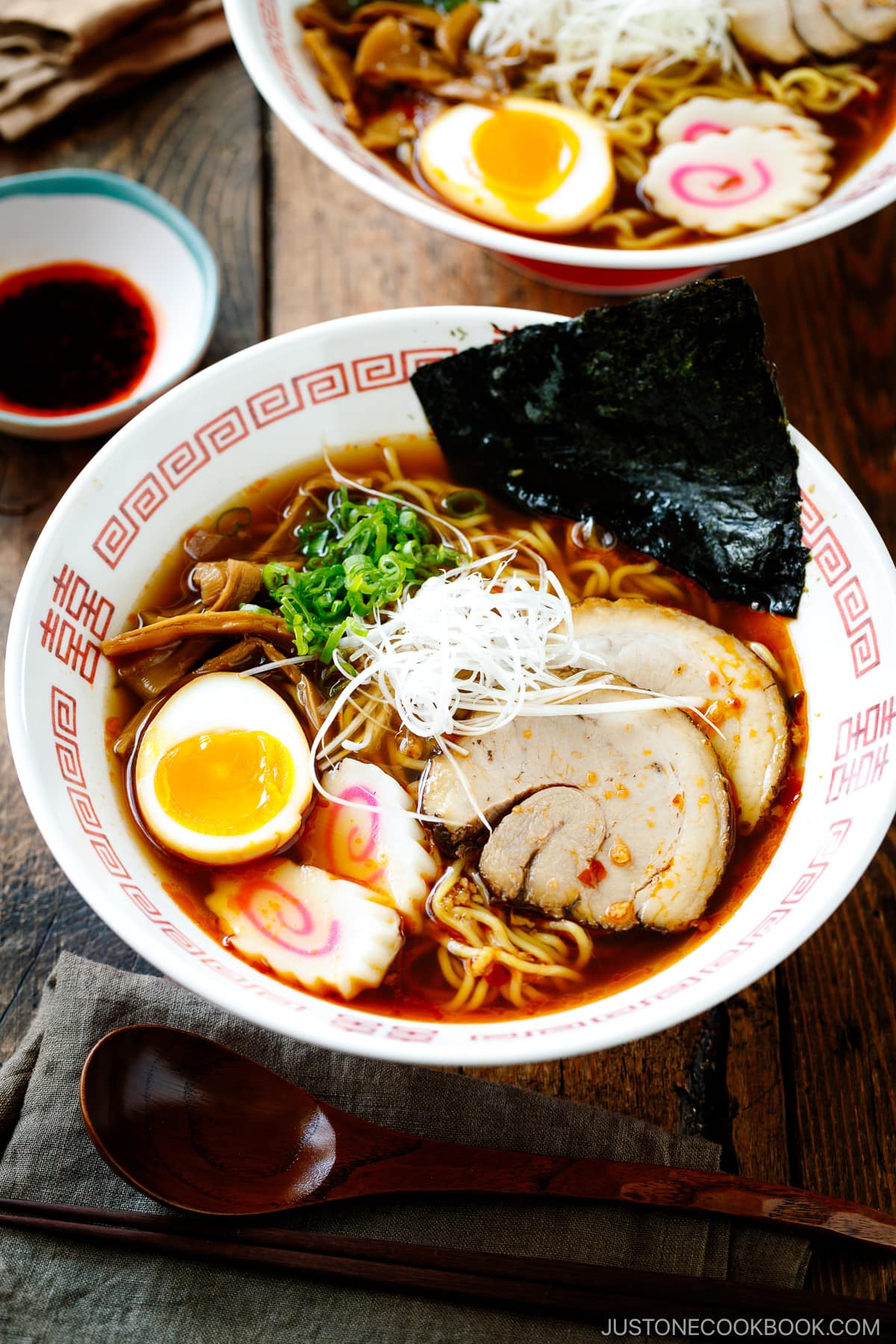
How to Make Spicy Shoyu Ramen at Home
Ingredients You’ll Need
- Ginger
- Garlic
- Doubanjiang (spicy chili bean paste) – We’ll cover this topic below.
- Chicken stock
- Dashi (Japanese soup stock) – We’ll cover this topic below.
- Soy sauce
- Roasted sesame oil
- Salt
- White pepper powder
- Fresh or dried ramen noodles – We’ll cover this topic below.
- Ramen toppings – We’ll cover this topic below.
Overview: Cooking Steps
The workflow of assembling the ramen is very simple.
- Prepare the toppings AHEAD OF TIME. Both Chashu and Ramen Egg should be made the previous day. This way, on the day of serving ramen, you just need half an hour to put it together.
- Prepare the soup. Combine all the soup broth ingredients and let it simmer.
- Cook the ramen noodles and assemble the ramen. Make sure you cook the noodles just al dente because the hot broth will continue to cook the noodles. Drain and divide into individual ramen bowls. Pour the soup broth and add the toppings to the ramen.
Soggy noodles in ramen are a no-no. When the ramen is ready, serve immediately and slurp!
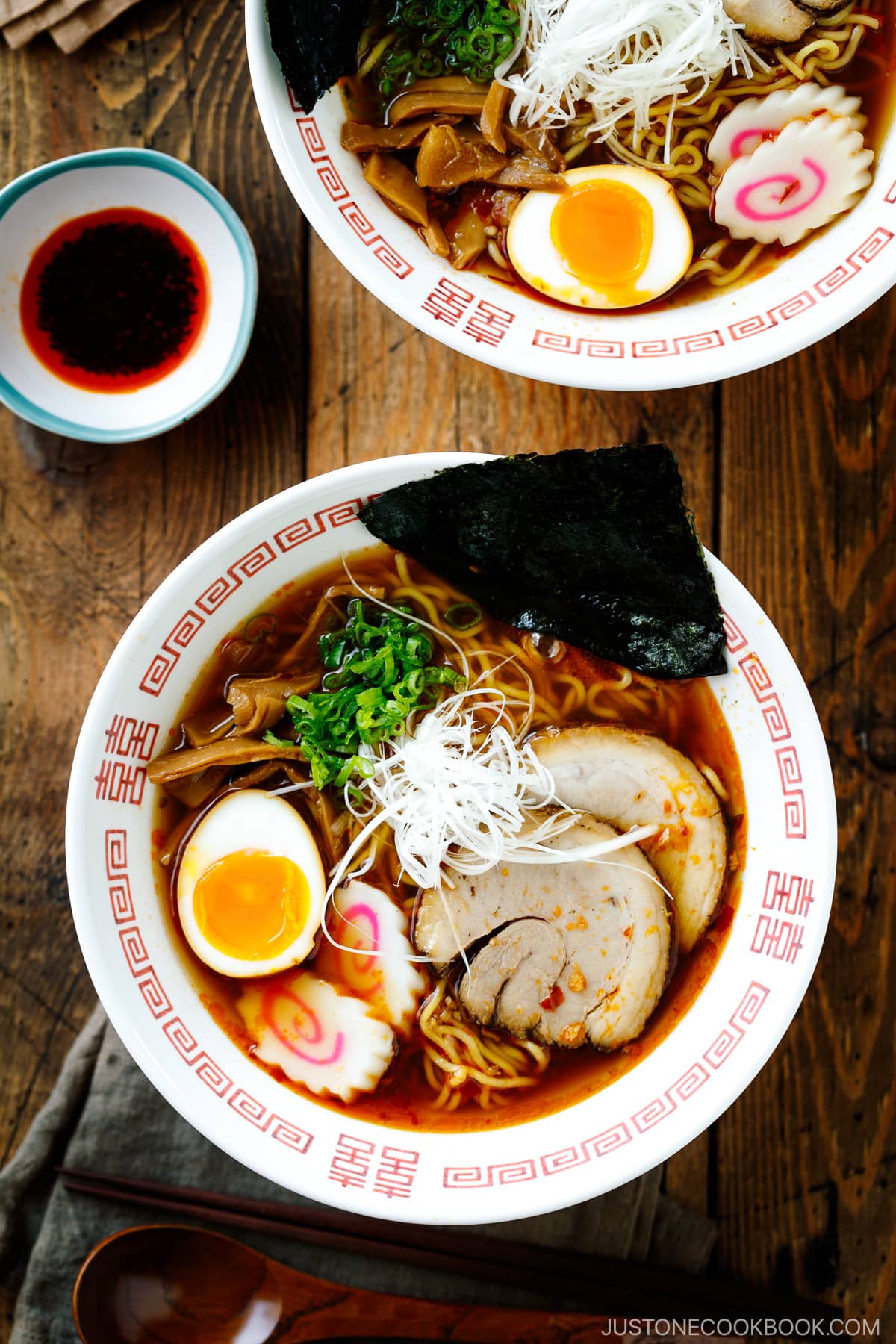
Two Key Ingredients to Make Delicious Soup Broth
We all know that soup broth defines ramen. It is what brings the dish together. But many of us do not have the time to simmer the soup stock with bones and all for hours. How do we make delicious soup broth without compromising the flavor of homemade ramen broth?
Here are two ingredients I used to boost the flavor of the soup broth.
1. Dashi (Japanese Soup Stock)
Besides the chicken stock, I also used dashi (Japanese soup broth) to give the soup broth extra depth.
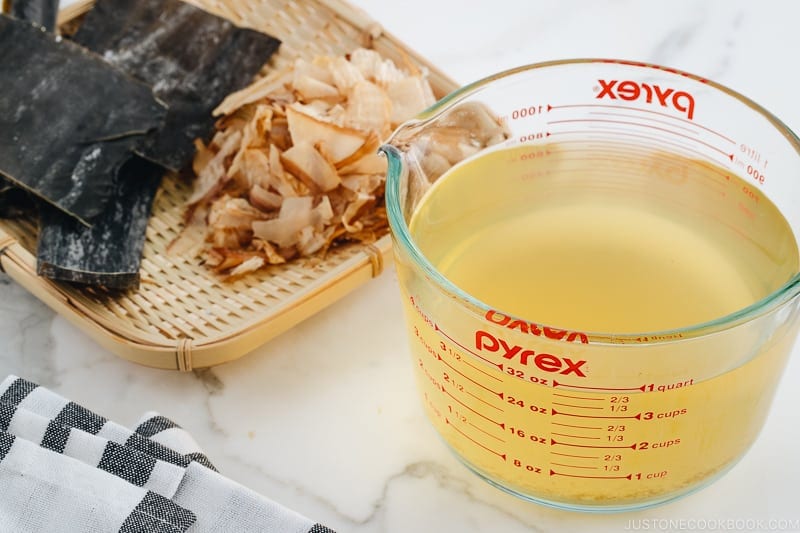
For this recipe, I actually used my favorite Dashi Packet to make dashi. Since I wanted a strong dashi flavor, I used two packets instead of recommended one packet for the measured water.
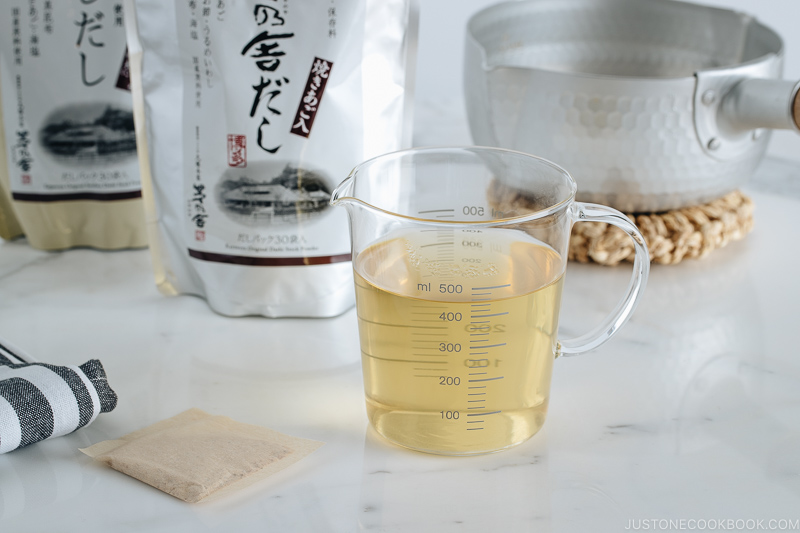
2. Doubanjiang (Spicy Chili Bean Paste)
The second key ingredient is doubanjiang (豆瓣醤) or spicy chili bean paste. It’s a combination of fermented broad beans as the main ingredient, soybeans, and often hot chilies. The salty, savory, umami-rich paste adds an incredible depth and character to the broth that you should not substitute.
You can add more if you like your soup to be spicy, but a small amount would be enough to give it a good kick.
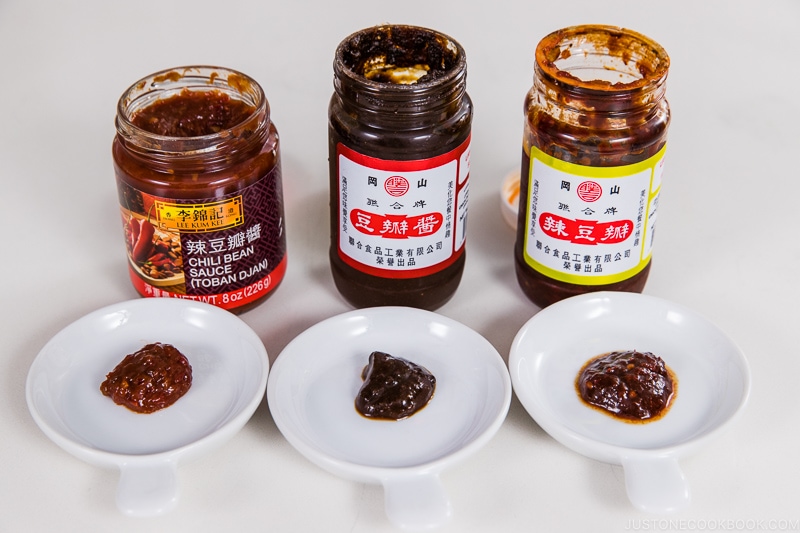
Non-Spicy doubanjiang: You can find non-spicy versions made in Taiwan, Hong Kong, and Guangdong. It has the same savory depth in the paste but without heat.
To distinguish the two versions, the Sichuan doubanjiang is called la-doubanjiang (辣豆瓣醬, “la” (辣) meaning ‘hot’ or ‘spicy’).
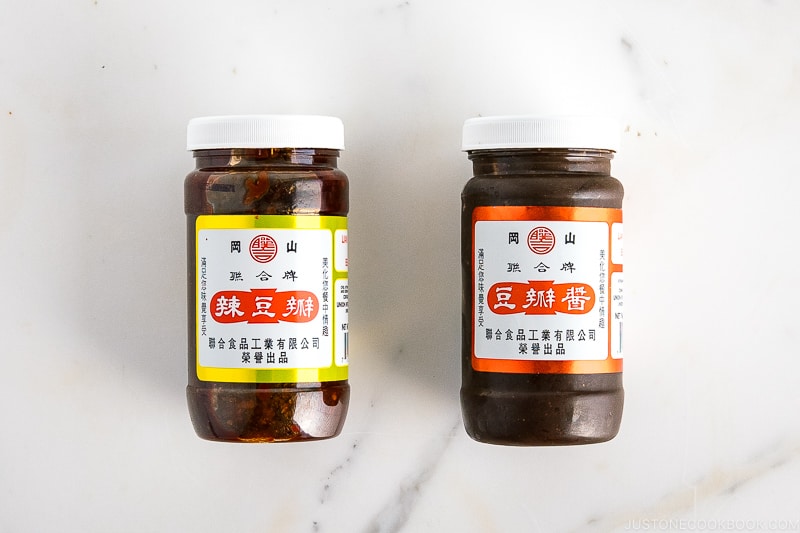
Taiwanese brands like Kangshan (岡山) (shown above) and Ming Teh (明德) offer the doubanjiang made from fermented broad beans and soybeans, and they usually have both spicy and non-spicy versions. I get Kangshan (岡山) brand at my local Chinese market (Marina Market in San Mateo). Amazon does not sell the non-spicy doubanjiang at this time (please let me know if you find one).
- Ming Teh Doubanjiang (non-spicy) – Yummy Bazaar
- Kangshan Doubanjiang (non-spicy) – Walmart
- Kangshan Doubanjiang (non-spicy) – Weee!
Doubanjiang substitute: If you really can’t find doubanjiang, you can use gochujang (Korean chili paste; spicy) or doenjang (Korean soybean paste; non-spicy). However, the ingredients are slightly different and have different flavor profiles.
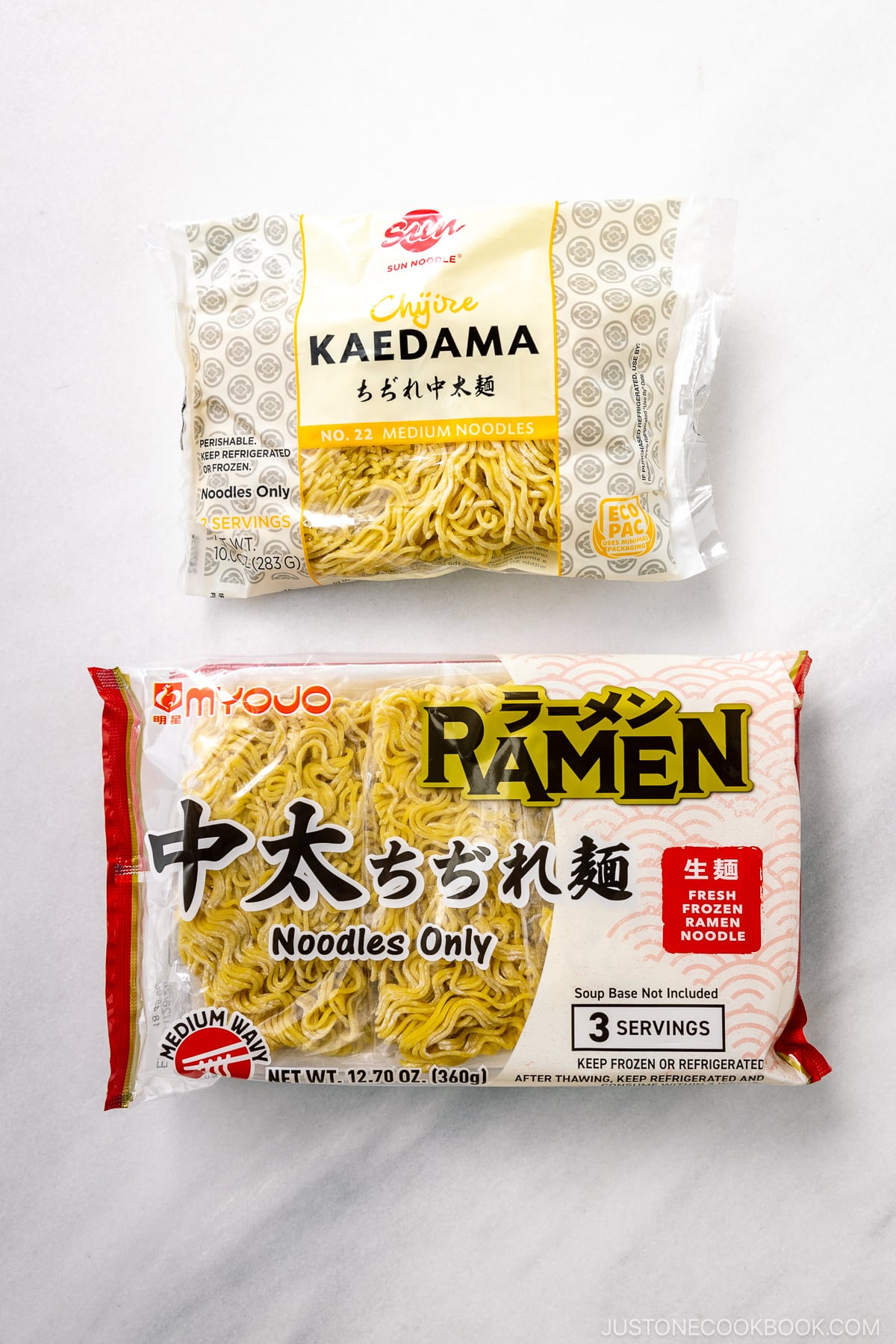
Where to Get Fresh Ramen Noodles
Fresh ramen noodles are made from four ingredients: wheat flour, water, salt, and kansui. Despite the yellowish color, the noodles do not contain eggs. Kansui, an alkaline solution, is what gives ramen its yellow tint and springy texture.
- Ramen noodles are either straight (ストレート麺) or wavy (ちぢれ麺). Generally, straight noodles are used for tonkotsu ramen while wavy noodles are used for soy sauce ramen, salt ramen, and miso ramen, but of course, there are exceptions.
- Ramen noodles have 6 different thicknesses: ultra-thin (極細麺), thin (細麺), medium-thin (中細麺), medium-thick (中太麺), thick (太麺), and extra thick (極太麺).
The ramen noodles used in shoyu ramen are usually the springy, wavy type.
Big Japanese grocery stores like Mitsuwa, Nijiya, and Marukai (Tokyo Central) sell packages of fresh ramen noodles (with or without soup packages included). Some large Korean and Chinese grocery stores also carry packages of fresh ramen noodles from Myojo and Yamachan Ramen.
Sun Noodles make great noodles and they ship domestically!
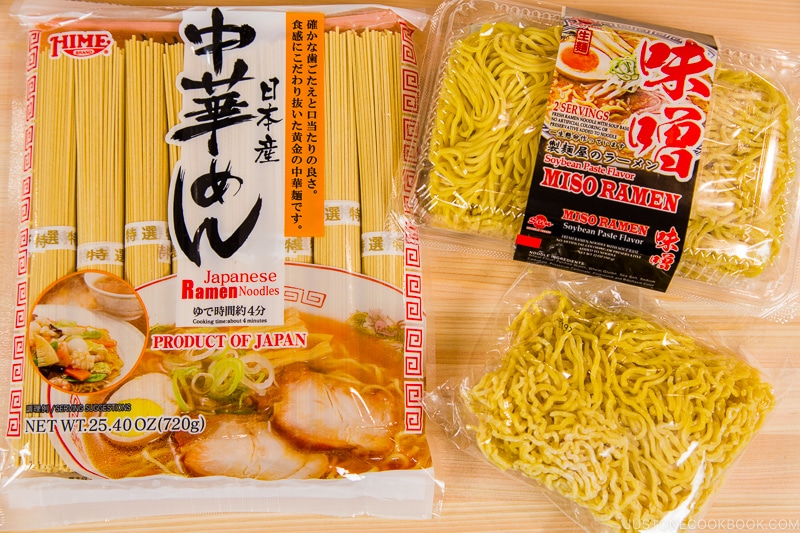
If you don’t have access to fresh ramen noodles, you can purchase dried ramen noodles (what we call Chukamen, 中華麺) by the HIME brand at Japanese or Asian grocery stores or Amazon.
If you are looking for gluten-free noodles, check out my favorite vegan-friendly ramen noodles by Gluten Free Meister (Kobayashi Seimen).
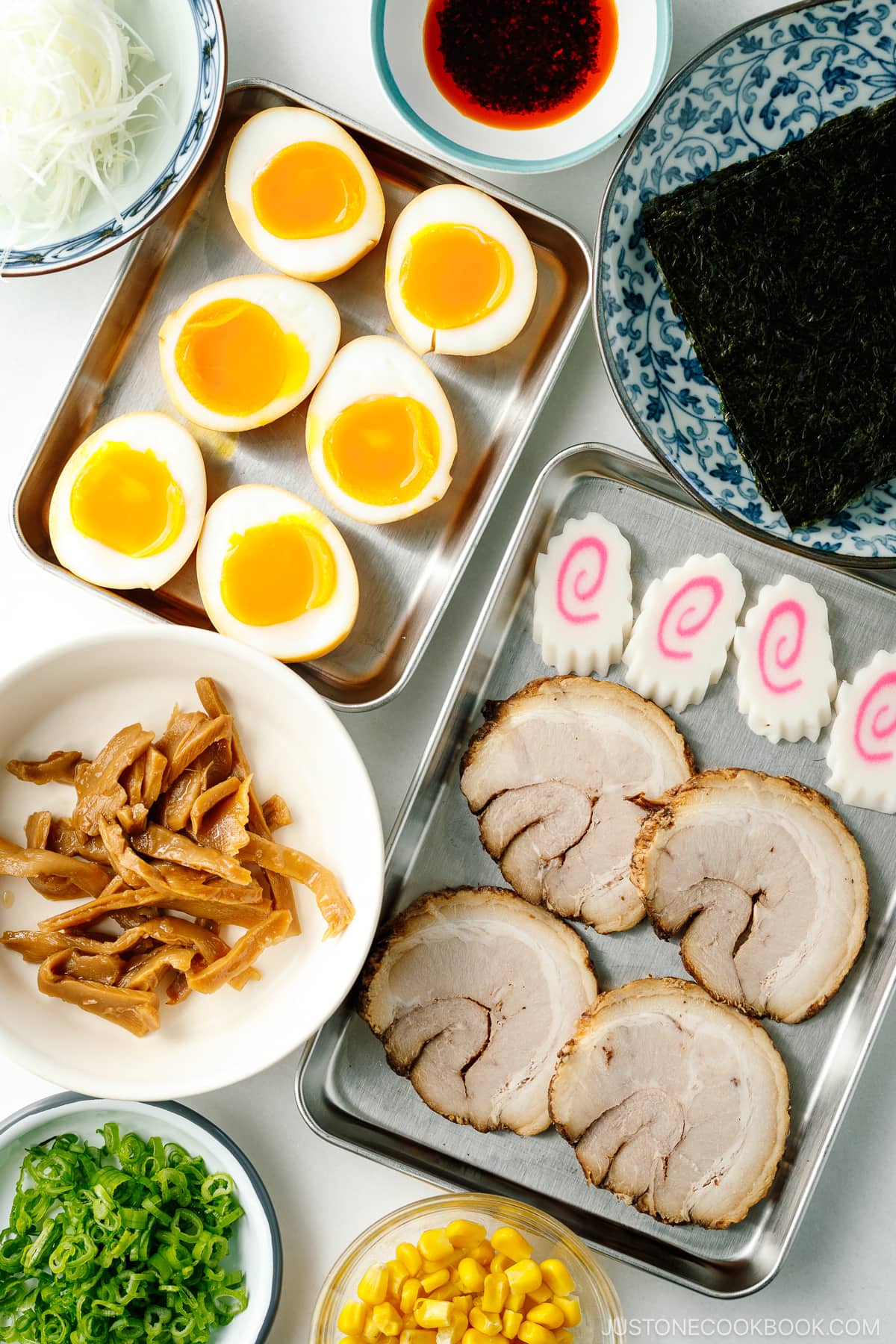
Ramen Toppings
There are various toppings that can go into spicy shoyu ramen. In this recipe, I top the ramen with:
- Chashu
- Ramen Egg (ajitsuke tamago or ajitama) or soft-boiled egg
- Menma (seasoned bamboo shoots)
- Narutomaki (fish cake)
- Shiraga negi (Japanese long green onion garnish)
- Chopped scallions
- Nori
- Homemade La-Yu (Japanese Chili Oil) – Swirl in a little bit if you like an extra kick of spice

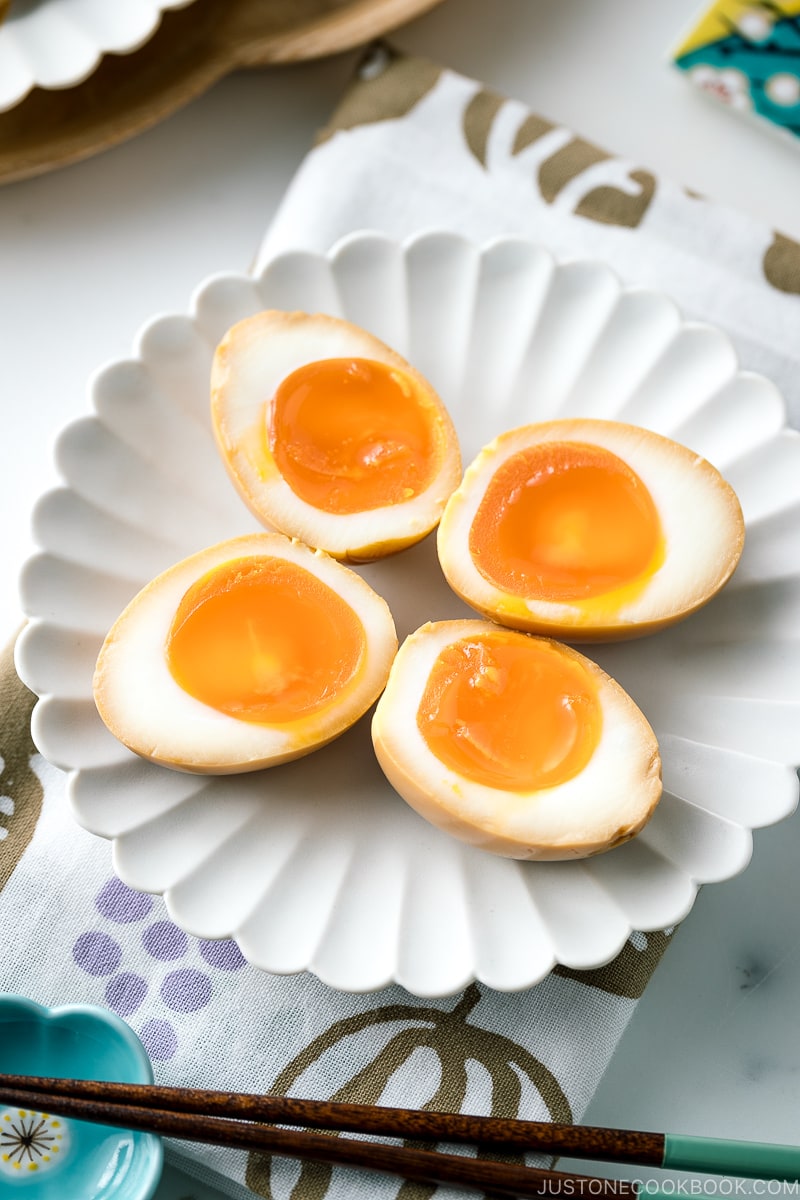
It may read like a long list of toppings, but you can definitely decide what you’d like to add to your ramen. Seasoned shiitake mushrooms or tofu are a great stand-in for chashu if you’re vegetarian. Feel free to keep it as simple or complex as you like!
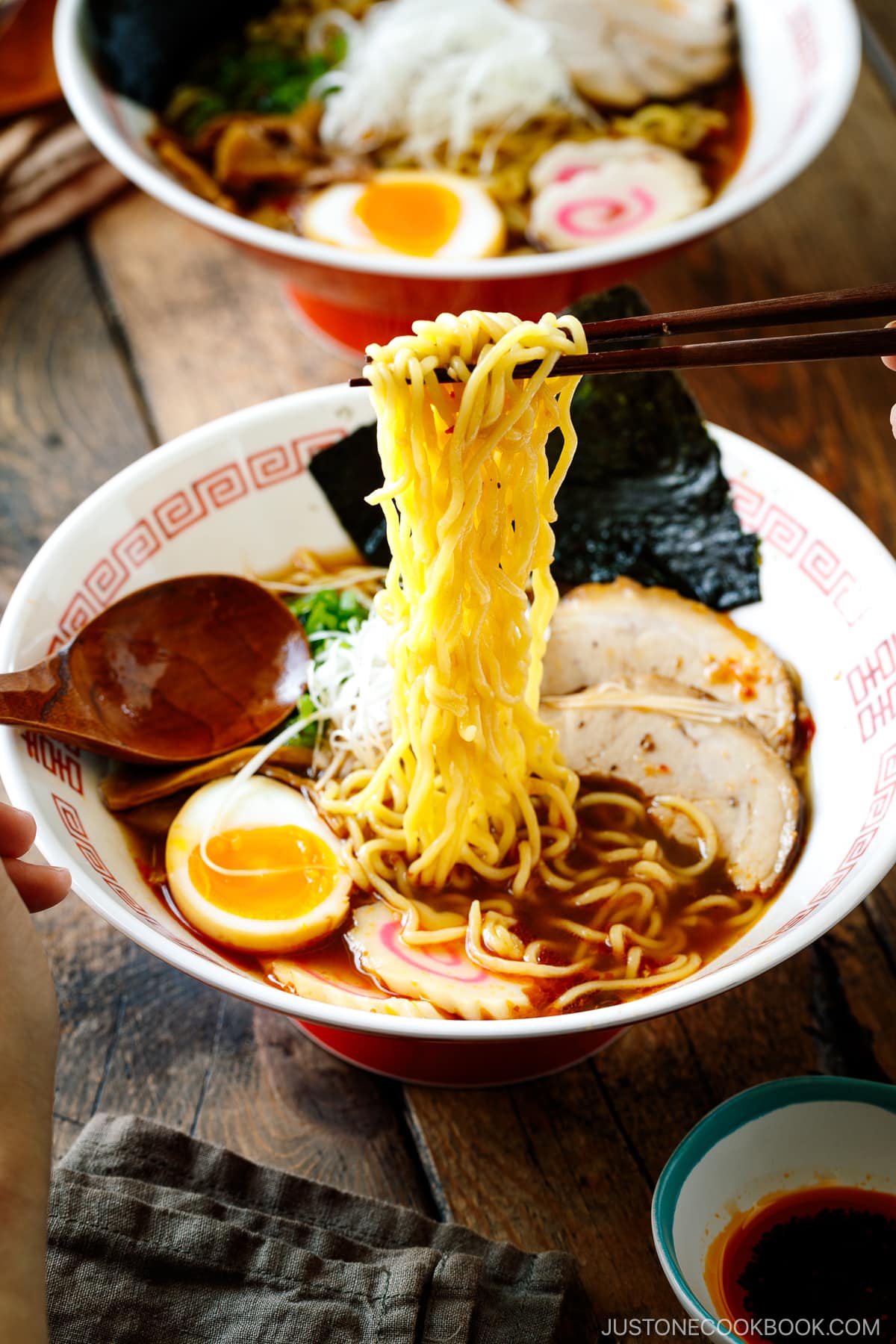
Try Other Delicious Ramen Recipes
- Vegetarian Ramen
- Shio Ramen
- Miso Ramen
- Tan Tan Ramen (Tantanmen)
- Tan-Men
- Mazesoba (Mazemen)
- Tsukemen (Ramen with Dipping Sauce)
Also, check out the Japanese Ramen Guide for Beginners!
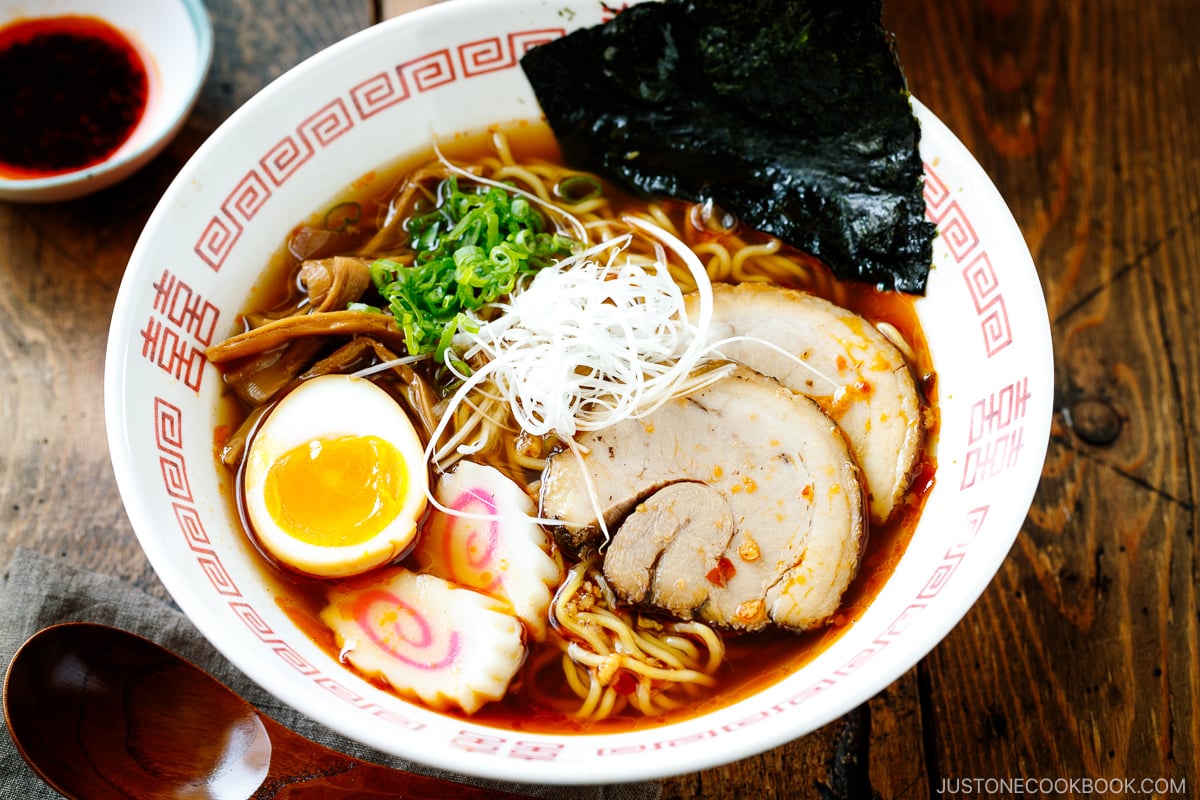
Wish to learn more about Japanese cooking? Sign up for our free newsletter to receive cooking tips & recipe updates! And stay in touch with me on Facebook, Pinterest, YouTube, and Instagram.
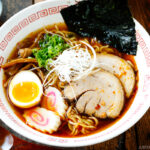
Spicy Shoyu Ramen
Ingredients
For the Soup Broth
- 1 tsp ginger (grated, with juice; from a 1-inch, 2.5-cm knob)
- 2 cloves garlic
- 1 Tbsp toasted sesame oil
- 2 tsp doubanjiang (spicy chili bean paste) (use either the spicy or non-spicy type, or use gluten-free doubanjiang; read the blog post for substitution info)
- 1½ cups chicken stock/broth (use vegetable stock for vegan/vegetarian)
- 1½ cups dashi (Japanese soup stock) (I use 2 dashi packets to make a strong dashi; or use standard Awase Dashi, dashi powder, or Vegan Dashi)
- 2½ Tbsp soy sauce (use gluten-free soy sauce for GF)
- 1 tsp Diamond Crystal kosher salt
- ⅛ tsp white pepper powder (plus more at the table)
For the Noodles
- 2 servings fresh ramen noodles (10–12 oz, 283–340 g fresh noodles; 6.3 oz, 180 g dry ramen noodles; for gluten-free, use GF ramen noodles)
For the Toppings (prepare in advance)
- 4 slices Homemade Chashu (Japanese Braised Pork Belly) (buy it premade at a Japanese grocery store or make my Chashu at least a day in advance; skip for vegan/vegetarian)
- 1 Ramen Egg (Ajitsuke Tamago) (sliced in half lengthwise; make my Ramen Eggs at least a day in advance; skip for vegan)
- 4 slices narutomaki (fish cakes) (skip for vegan/vegetarian)
- ¼ cup menma (seasoned bamboo shoots) (you can buy it at a Japanese grocery store or on Amazon; you can make my Quick Menma Recipe)
- 1 green onion/scallion (chopped)
- Shiraga Negi (julienned long green onions) (follow my tutorial on how to prepare Shiraga Negi)
- ½ sheet nori (dried laver seaweed) (cut in half)
- la-yu (Japanese chili oil) (optional; make my Homemade La-yu)
Instructions
- Before You Start: Prepare the ramen toppings ahead of time (a day in advance for the ramen egg and homemade chashu) so they‘re ready to serve with your piping hot ramen soup.
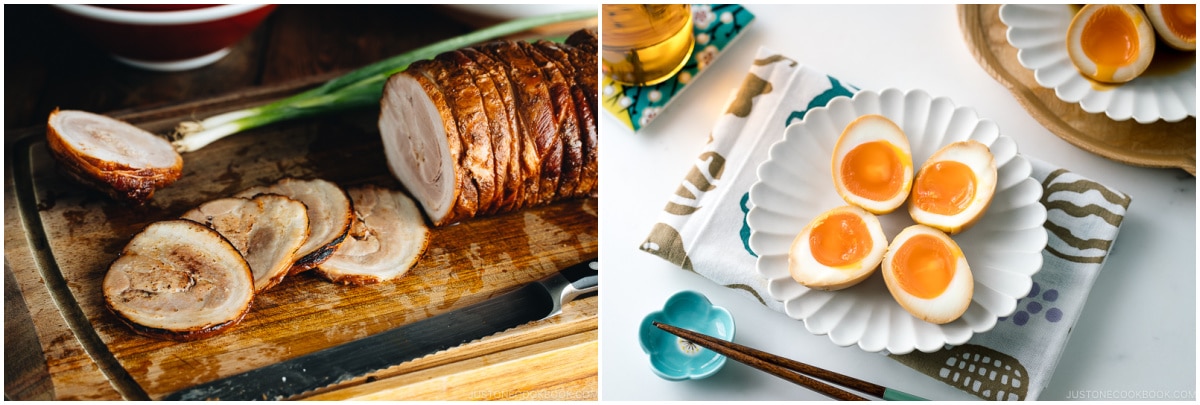
- A typical ramen bowl can hold 1200–1400 ml of liquid. We will prepare 1½ cups (360 ml) of soup broth per bowl, which should be more than enough for a ramen bowl size. If you’re using bigger bowls, you may need to prepare extra soup to fill them up.
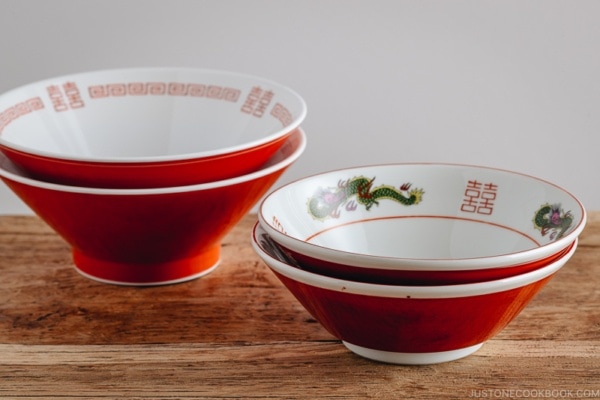
- Gather all the ingredients. Next, prepare a big pot of water for cooking the ramen noodles. Slowly bring it to a boil on medium heat while you prepare all the ingredients.
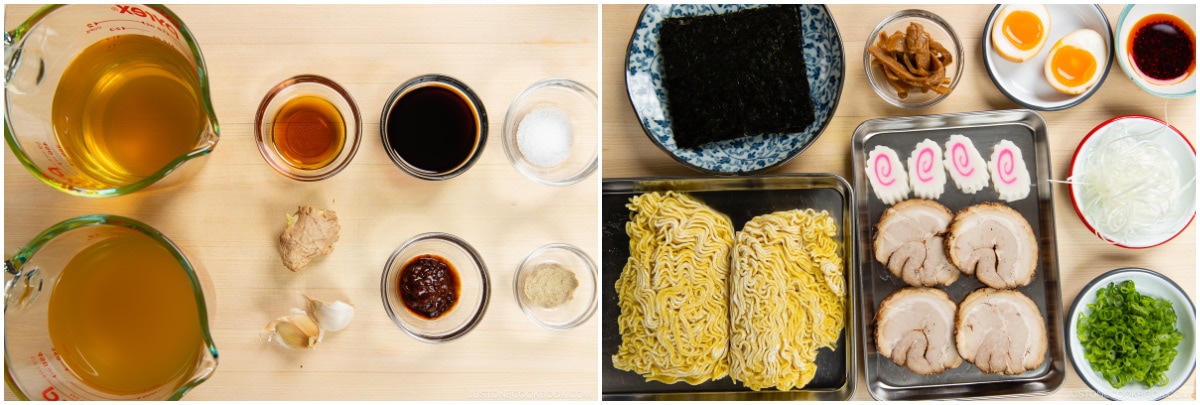
To Prepare the Soup Broth
- Grate the ginger (I use a ceramic grater) and reserve 1 tsp ginger, grated, with juice. Mince or press 2 cloves garlic (I use a garlic press). Tip: If you’re unsure how much ginger flavor you’d like, start with less and add more later.
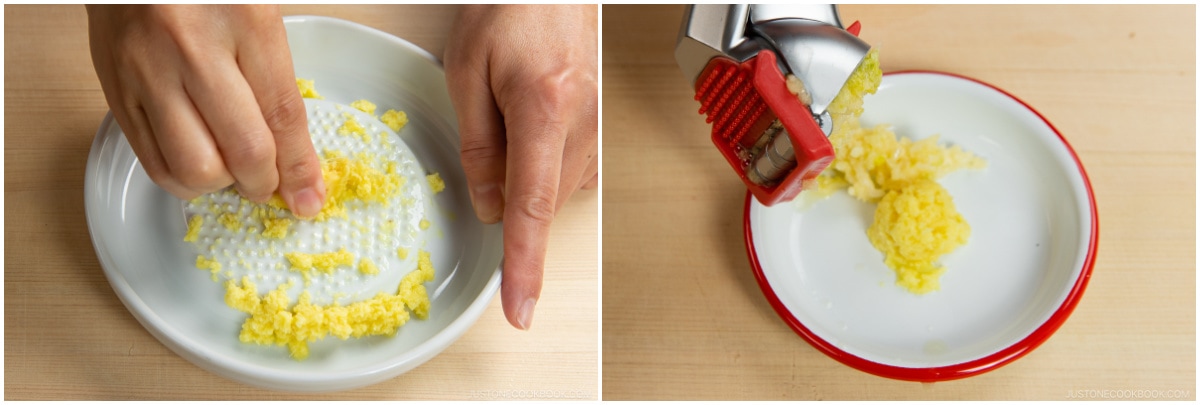
- Set a small saucepan over medium-low heat. Add 1 Tbsp toasted sesame oil, the garlic, and the grated ginger. Cook until fragrant, about 1–2 minutes. Tip: Make sure not to burn the aromatics.
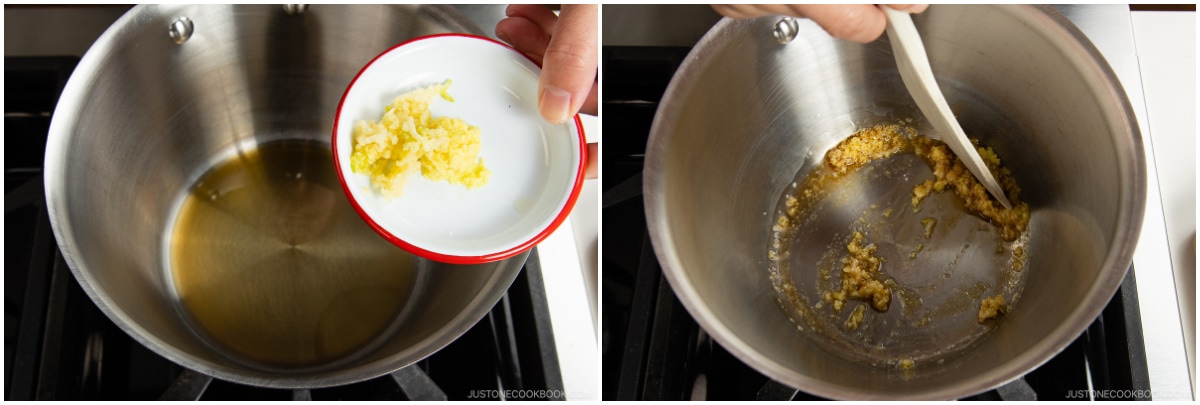
- Add 2 tsp doubanjiang (spicy chili bean paste) and stir for 15 seconds.
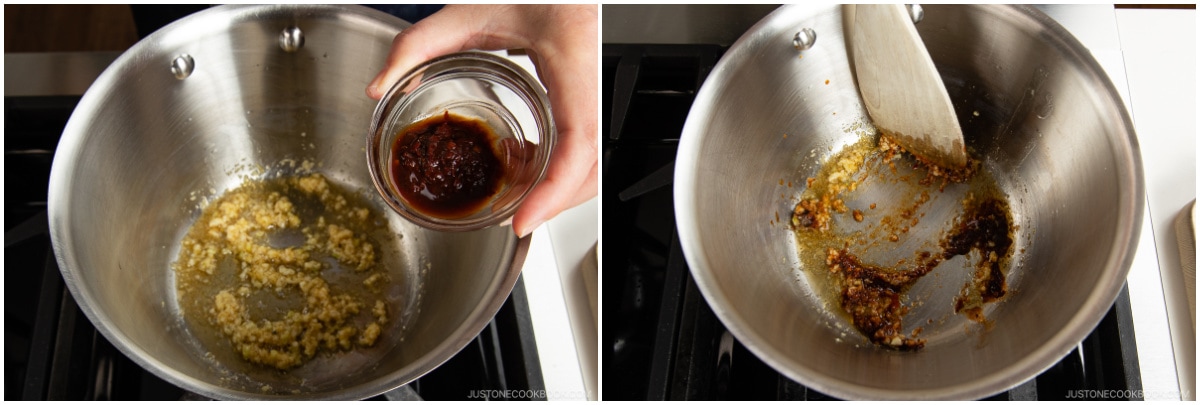
- Add 1½ cups chicken stock/broth, 1½ cups dashi (Japanese soup stock), and 2½ Tbsp soy sauce and bring it to a boil. Once boiling, reduce the heat and simmer for a few minutes.
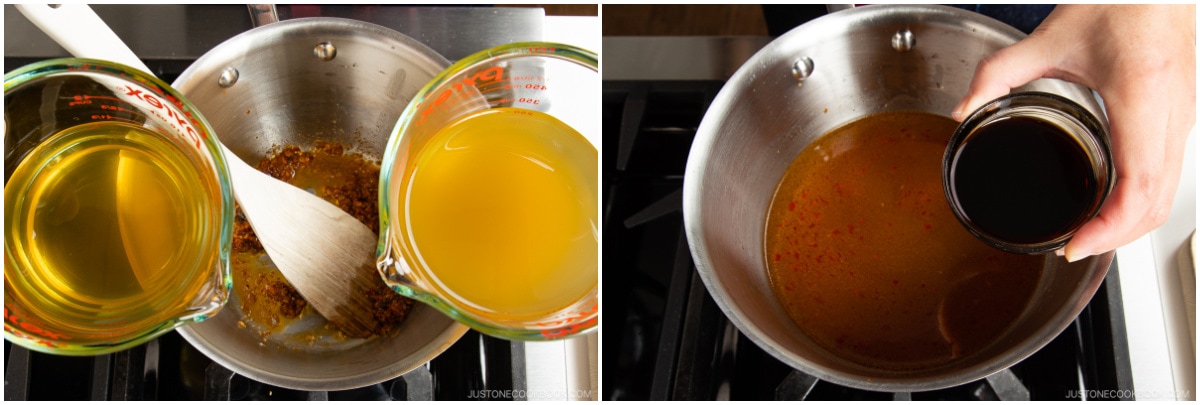
- Taste the soup now and adjust the seasoning with 1 tsp Diamond Crystal kosher salt and ⅛ tsp white pepper powder. Don‘t be shy about adding salt because the broth will taste less salty after you add the noodles. Cover with a lid, reduce the heat to low, and keep the soup barely simmering while you quickly boil the noodles. You want the soup piping hot and ready to pour as soon as the noodles are done cooking.
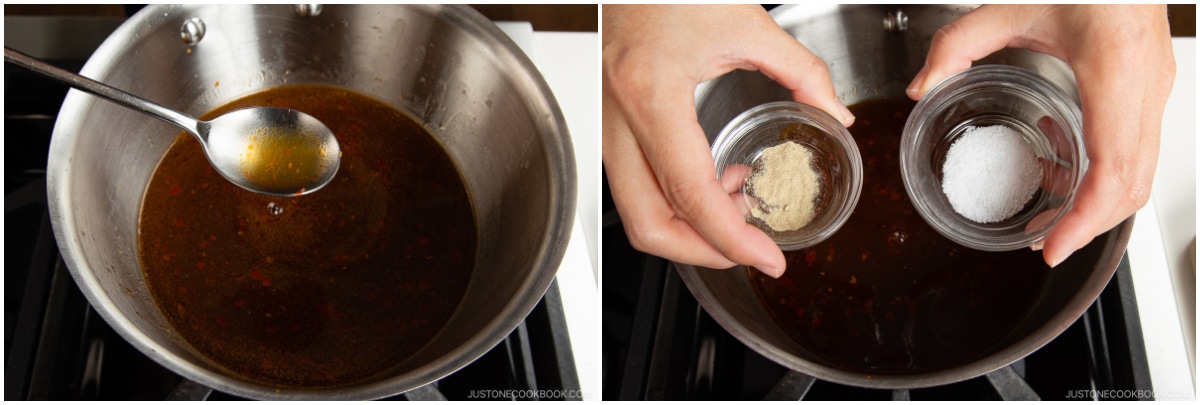
To Cook the Noodles
- Before cooking, loosen up 2 servings fresh ramen noodles with your hands. Once the big pot of water is boiling, add the noodles and cook according to the package instructions. Here, I cook the noodles inside a big noodle strainer (I got it in Japan) that I’ve set inside the pot.
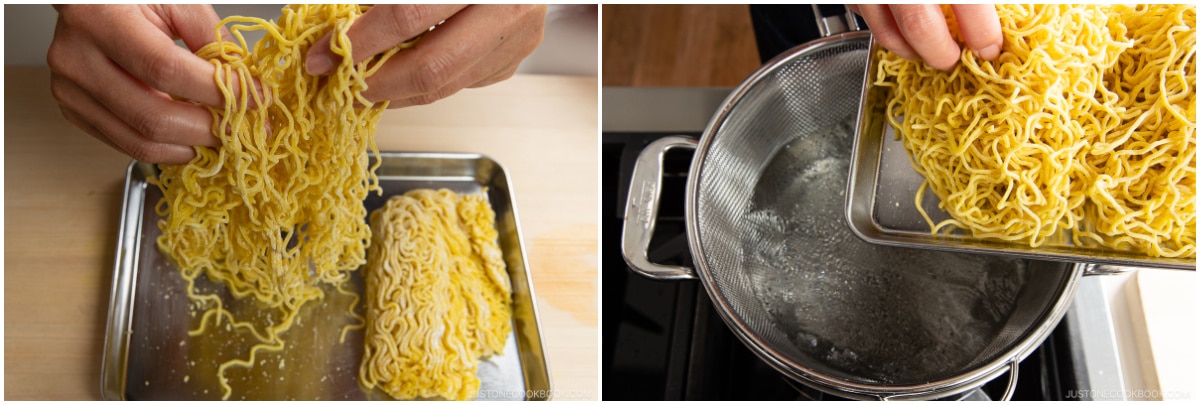
- While cooking, stir and separate the noodles with chopsticks. When the noodles are done cooking, drain them well in a strainer, shaking it a few times to drain the water thoroughly (otherwise it will dilute the soup broth).
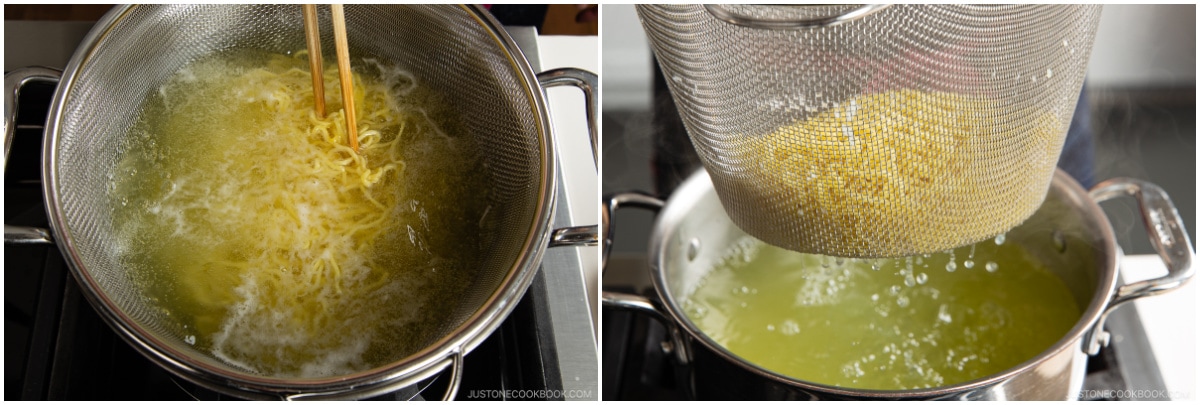
To Serve
- Divide the noodles into the individual ramen bowls. Pour about 1½ cups (360 ml) of the hot soup broth into each bowl.
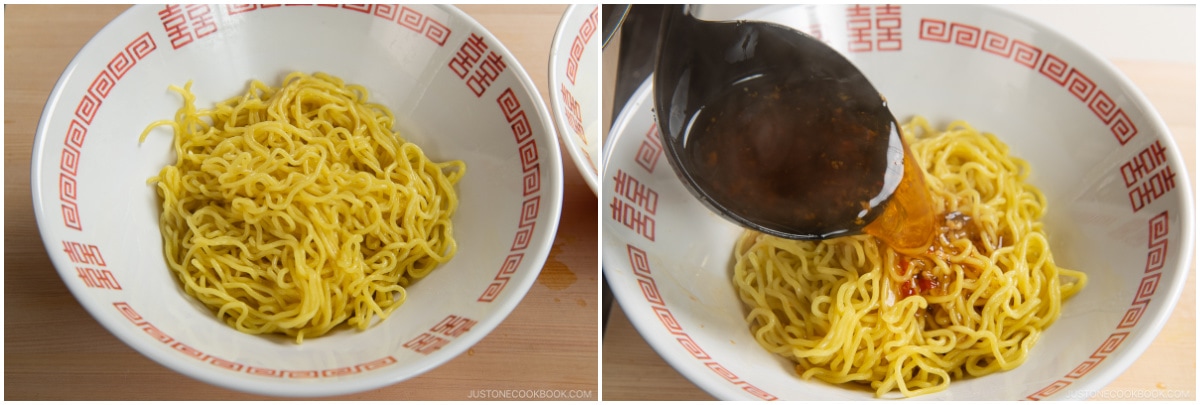
- Now, arrange the noodles in the bowl for an attractive presentation. First, lift the soup-soaked noodles high and straighten them. When the noodles are neatly aligned, fold the noodles from the edge of the bowl and place them over the noodles in the soup. This is an optional step, but ramen shops typically do this so the ramen looks pretty.
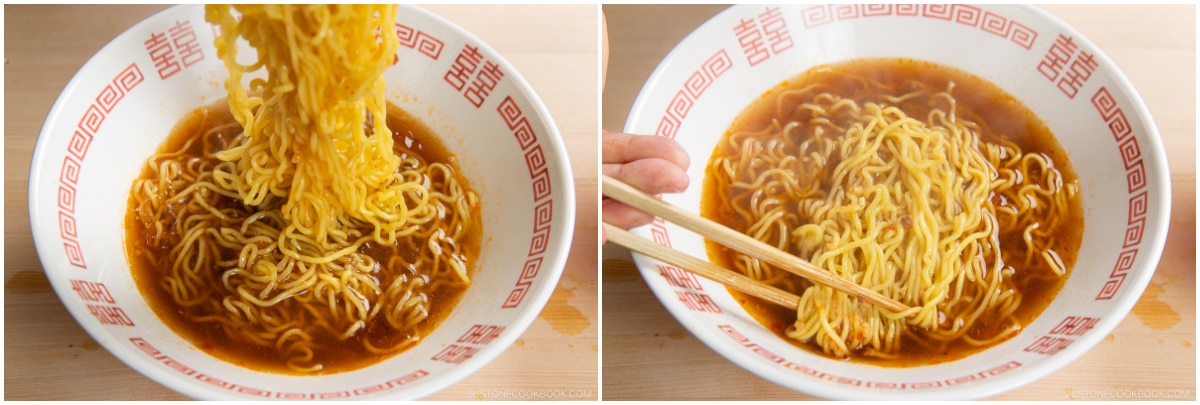
- Quickly and neatly arrange the prepared toppings on top of the noodles. Serve immediately and season to taste with additional white pepper powder and optional la-yu chili oil.
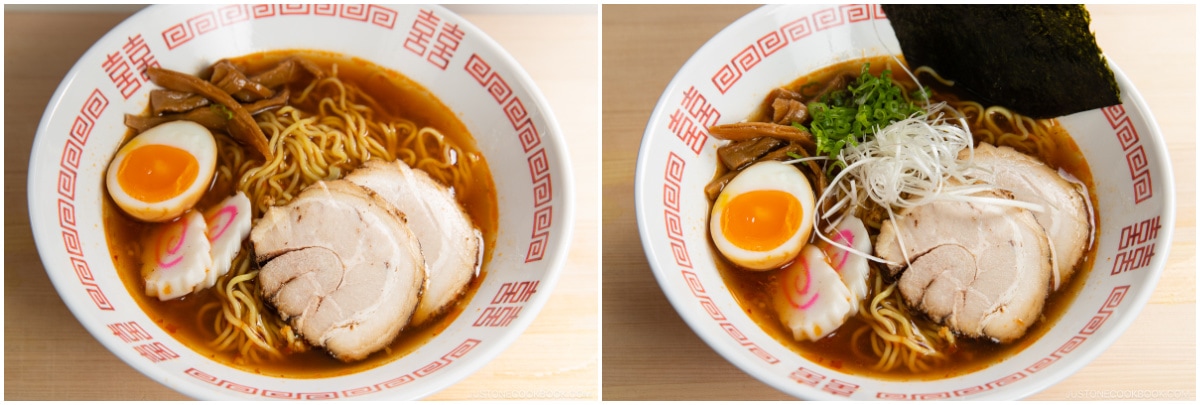
To Store
- You can keep the leftover soup and toppings separately in airtight containers and store in the refrigerator for up to 3 days. Cook the noodles right before serving.
Nutrition
Editor’s Note: The post was originally published on Nov 28, 2011. It’s been updated with new images and updated content on May 15, 2023.
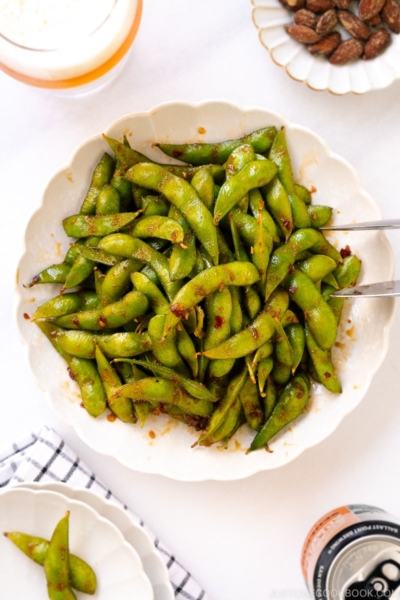








Hey there! I was wondering about the beautiful bowl Nami used in the pictures for this recipe. I really love it and was hoping to find some similar ones. I’ve checked out MTC Kitchen and Miya, but haven’t had any luck so far.
Hi, Cherish! Nami purchased this ramen bowl in Japan.
I can’t say much, but she’ll be selling Japanese tableware this fall, including ramen bowls. So please stay tuned. 🤗
Tried it today. This is so good!!! Thank you.
Hi Yi, Thank you for trying Nami’s recipe!
We are so happy to hear you enjoyed homemade Spicy Shoyu Ramen.😊
This was so satisfying on a cold winter night! Used the pork broth which I had saved from your Okinawan pork belly recipe. My husband commented that it tasted so authentic😃Thank you so much for your wonderful recipes!
Hi Loengal! Wow!🤩 The Ramen looks so delicious!
Thank you very much for trying Nami’s recipe and sharing your photo and experience with us! Happy Cooking!
Nami, I’m surprised you don’t have a video for this delicious ramen on YouTube. Please consider making one. Thanks!
Hi JoeP, Thank you very much for your request! We will add it to our list!🙂
Hi! I’m trying to recreate a spicy shoyu shrimp tempura ramen from a local restaurant and was curious if you’ve tried this recipe with seafood stock in place of the chicken stock? Or do you have any tips/recipes that could help me with my mission? Am definitely using your shrimp tempura recipe – Love your site!!
Hi Caroline! Thank you very much for reading Nami’s post!
We have not tried this recipe with seafood stock, but it should work. You can also try adding the shrimp shell into the soup stock and simmer for a bit to enhance the shrimp flavor, then strain the soup through a cheesecloth.
We hope this is helpful! Good luck!